August 1, 2023
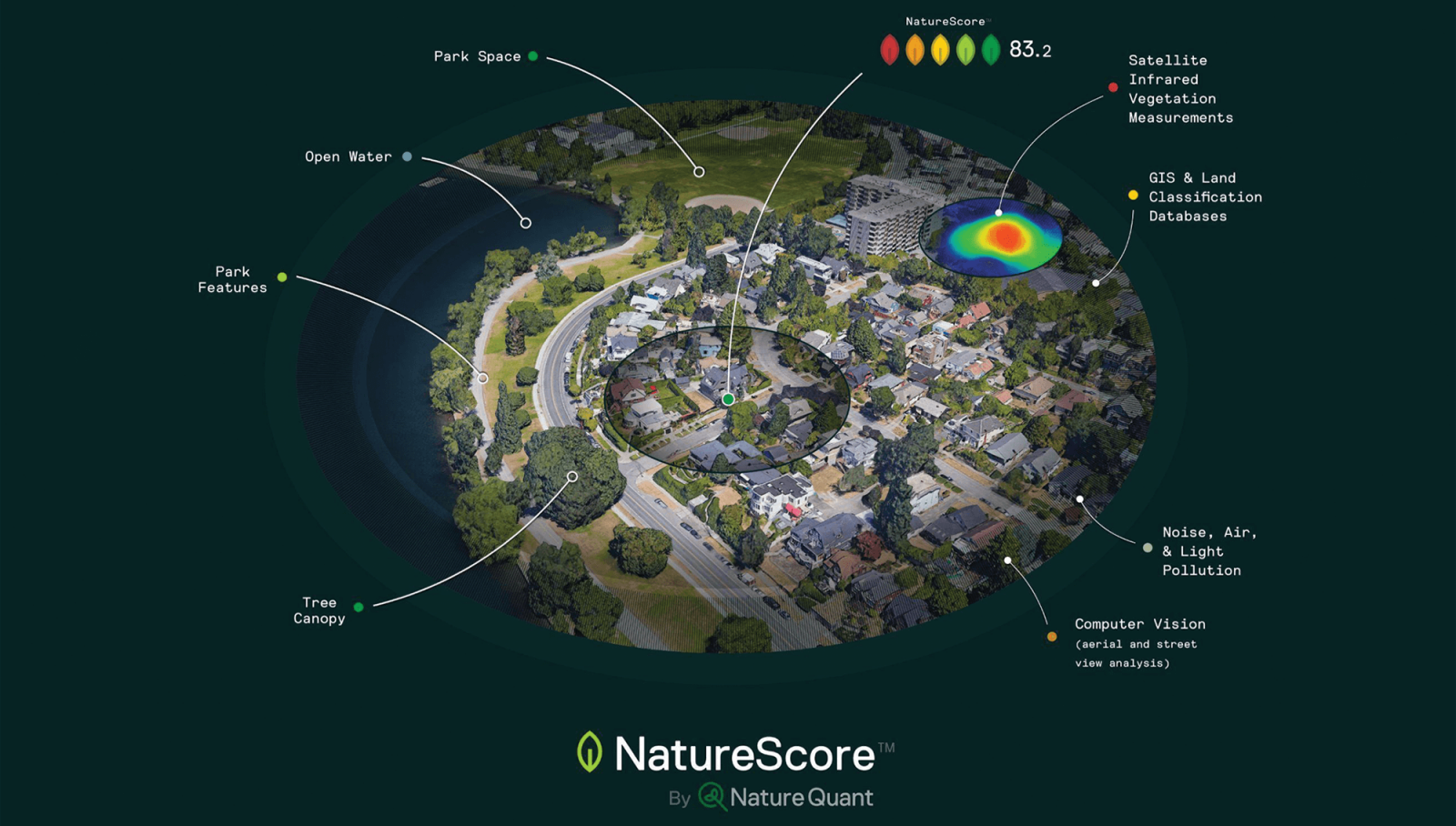
NatureQuant utilizes diverse data inputs to compute NatureScore™ – a measurement of the natural elements that optimize your health within a one-km radius of your location.
The green factor
How one company is using data to map our proximity to and contact with nature — and why that matters so much to public health.
BY DR. NADINA GALLE
When you visit your doctor, they ask questions to help paint a picture of your overall health. However, this approach fails to account for the impact of one crucial factor: your postal code.
Studies have shown that where you live can significantly affect your health and life expectancy. For example, a Danish Twin Study revealed that contrary to popular belief, genetics only account for approximately 20 per cent of our longevity. The remaining 80 per cent is determined by various environmental, behavioural, social, and economic factors commonly called “environmental and social determinants of health.” These factors, which include access to education, quality housing, safe neighbourhoods and healthy food options, can greatly impact one's health outcomes and overall quality of life.
Study after study has shown that access to nature may be one of the most critical determinants of health. Spending time in nature has been proven to boost our physical and mental health, leading to lower rates of depression and anxiety, better immune system function, and longer life. However, as more people live in cities and spend less time in nature, their health is suffering. What course of action can we take to increase nature where we live?
Quantifying nature
To enhance nature exposure at home and in our communities, accurate measurement is essential. However, effective tools are scarce for quantifying nature, evaluating exposure, tracking progress, and incorporating new data sources. As a result, analyzing these aspects is cumbersome and time-consuming. There is also a lack of agreement on a universally accepted method for measuring or assessing nature exposure.
In 2021, I had the privilege to meet the founders of NatureQuant. This Eugene, Oregon-based startup combines data and remote-sensing technologies to create nature “heat maps” that show how healthy a specific location will likely be based on its natural elements.
NatureQuant utilizes diverse inputs to capture a comprehensive view of the environment. These inputs span from the immediate vicinity of a home to a one-kilometre radius of the subject location. By combining different data sources such as land cover types, vegetation densities and built city elements, NatureQuant can gather a wealth of information. This data is collected from various sources, including aerial photography, satellite-based vegetation measurement, GIS databases and object-based imagery analysis tools. Furthermore, NatureQuant also considers factors such as air quality, noise pollution, urban heat islands and light pollution.
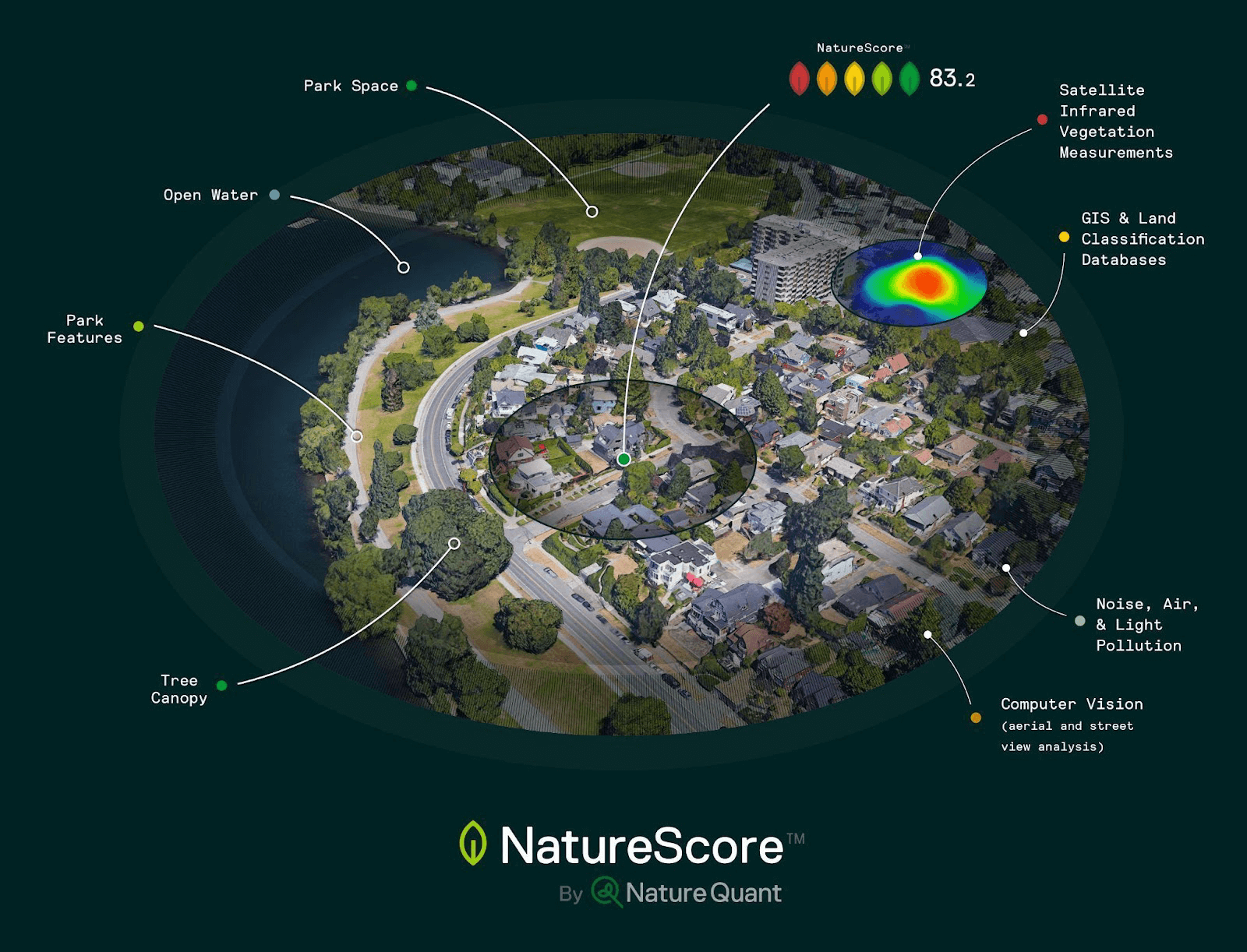 NatureQuant utilizes diverse data inputs to compute NatureScore™ – a measurement of the natural elements that optimize your health within a one-km radius of your location.
NatureQuant utilizes diverse data inputs to compute NatureScore™ – a measurement of the natural elements that optimize your health within a one-km radius of your location.
With this holistic approach, NatureQuant creates NatureScore™ — a numerical rating system that uses machine learning to determine the health benefits of nature exposure in a specific location. On the NatureQuant website (naturequant.com/naturescore) you can type in any address and find the location’s NatureScore™ from 0-100 (or 0 to 5 “leaves”).
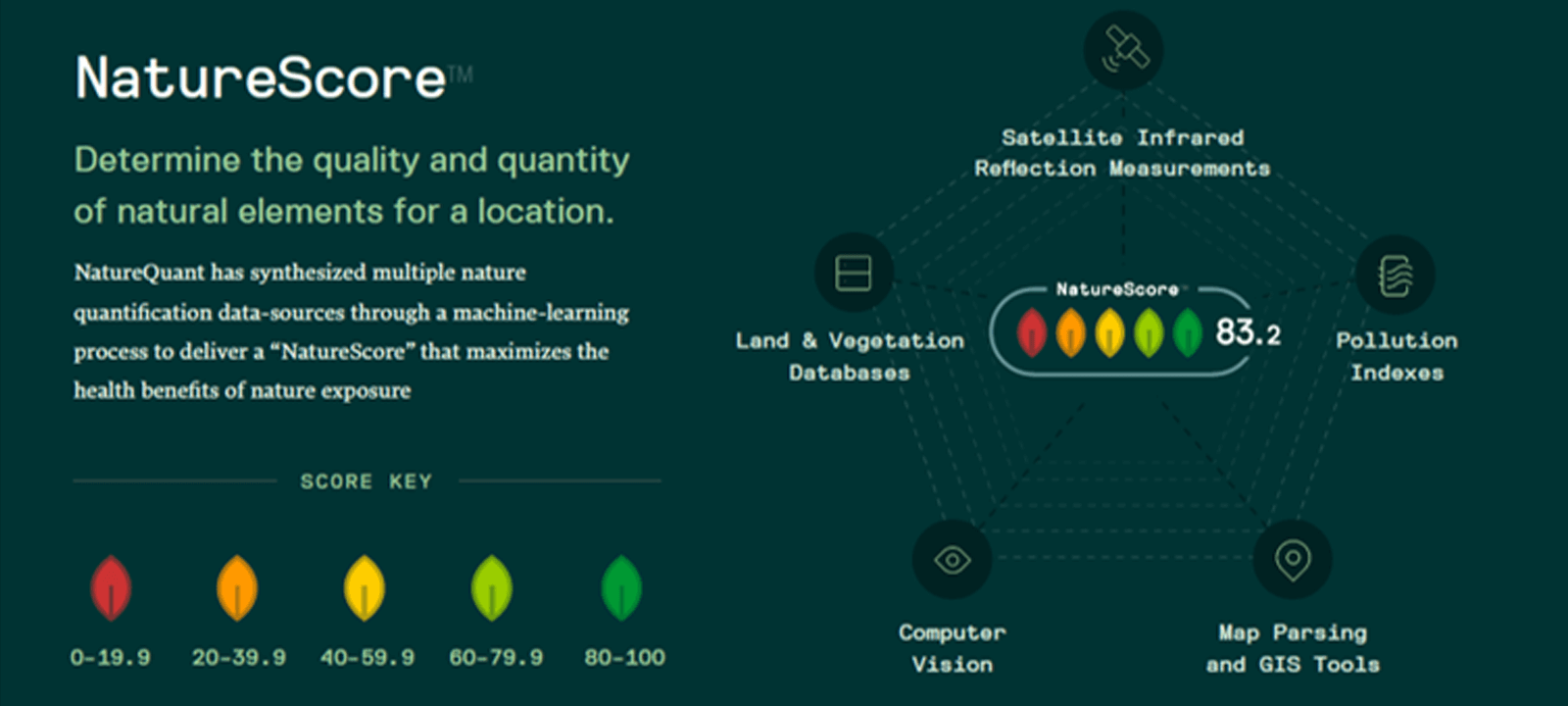 NatureScore™ accurately measures the presence and quality of natural elements, prioritizing live vegetation over less impactful elements like sand or rock for better predictive health outcomes.
NatureScore™ accurately measures the presence and quality of natural elements, prioritizing live vegetation over less impactful elements like sand or rock for better predictive health outcomes.
NatureScore™ accurately measures the presence and quality of natural elements, prioritizing live vegetation over less impactful elements like sand or rock for better predictive health outcomes.
For example, despite being situated along Highway 401, the Landscape Ontario headquarters in Milton, Ont., received a “Nature Rich” score, largely due to its on-site greenery and woodlands directly north of the property. Depending on results in your area, it may give you the information needed to encourage you and your community to take steps to bring a little more green into your lives.
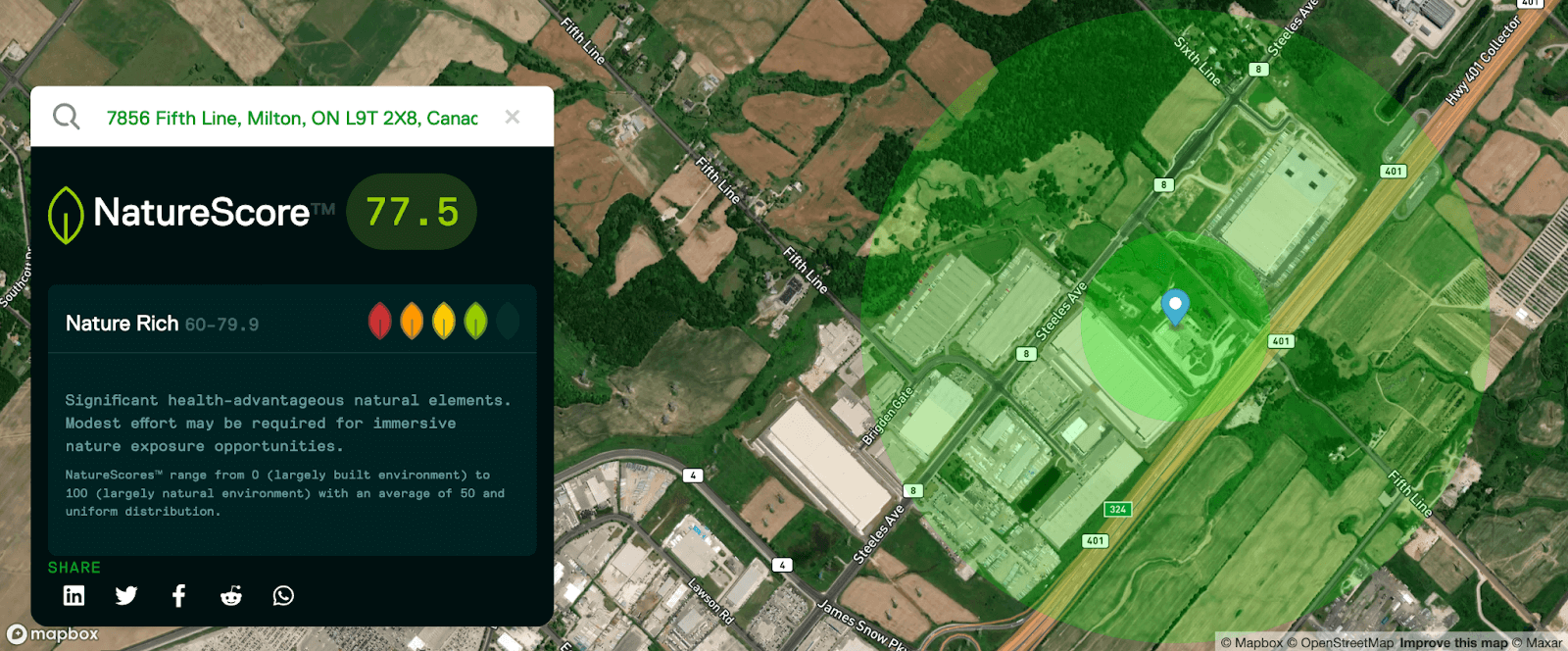 The NatureScore™ rating of Landscape Ontario’s headquarters in Milton, Ontario.
The NatureScore™ rating of Landscape Ontario’s headquarters in Milton, Ontario.
Why it matters
Nature access may be one of the most critical determinants of health, making the creation and cultivation of private and public green spaces critical. Whether it's a hike in the woods, a stroll in the park, or even just a window with a view of greenery, nearby nature has been linked with lower rates of depression and anxiety, improved immune system function, lower heart rate and blood pressure, and even greater life expectancy.
On par with changes in exercise and diet, nature contact shows potential in preventing and treating various serious diseases. It offers considerable advantages, such as being almost cost-free compared to conventional medical interventions, having no side effects, and being practical without needing highly trained professionals. Few, if any, medications or interventions can offer these remarkable attributes.
Why is nature so beneficial to our health? Some researchers believe it's because humans evolved in natural environments, and being deprived of nature can cause stress, chemical imbalances and other negative health outcomes. Others point to the stress-reducing effects of spending time in green spaces or the social benefits of engaging with others in an outdoor setting. Whatever the underlying mechanism, it's clear that access to nature should be a top priority for anyone interested in promoting health and well-being.
Unfortunately, the modern world has drastically separated most of us from nature, creating a new indoor and urban lifestyle. With more than half of the global population — and most North Americans — living in urban areas, our exposure to nature is limited. This disconnection results in a growing nature deficit, which negatively affects our mental and physical well-being. Numerous studies have shown a strong link between declining nature exposure and the rise of depression, anxiety, heart disease, and obesity over the past five decades.
Whether you’re a new home buyer, a city park manager, or a public health policy analyst, NatureScore™ can provide valuable insights. One particular example of partnership that stands out to me: NatureQuant’s partnership with the Arbor Day Foundation (ADF) to focus tree planting work in neighborhoods where trees are needed most.
In 2022, ADF announced it would plant 500 million trees in five years to celebrate its 50th anniversary – an ambitious goal that needed roots in the ground. Using NatureScore™, ADF will identify nature-deprived communities with other socioeconomic disadvantages, like low income, education, employment, or housing shortages, and prioritize planting there. Leveraging ADF’s local network of community organizations across the continent, NatureScore™ has the opportunity to become the industry standard for community tree growing – ensuring more trees are planted in the most disadvantaged communities worldwide. You can listen to S4E2 of the Internet of Nature Podcast with Ben Wilinsky, Director of Partnerships and Innovation at the ADF to learn more.
And it’s not a moment too soon. A remarkable finding has emerged in a groundbreaking meta-study involving eight million individuals across seven countries. Increasing the amount of vegetation within a 1,600-foot radius of homes by just 10 percent can decrease the probability of death (so-called “all-cause mortality”) by a staggering 4 percent for any given year. This research underscores the importance of having green spaces in our neighbourhoods, proving that our address holds more power over our well-being than our genetics. The presence of nearby nature has a profound effect on our health, and now, thanks to advancements in technology, we have the means to enhance it.
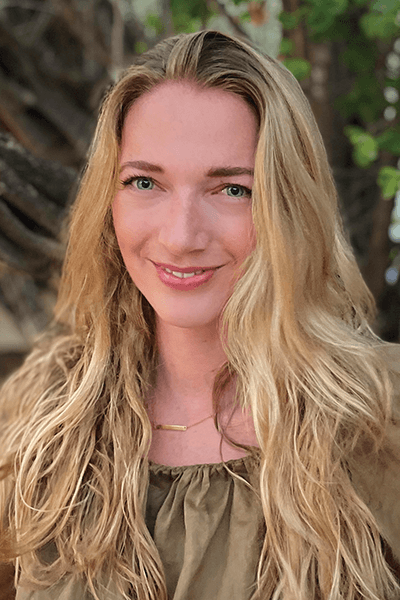 Dr. Nadina Galle spotlights Internet of Nature (IoN) technologies and practitioners making a difference in how we can optimize soil health, manage urban forests, create liveable cities, and everything in between. To learn more about the IoN and to catch episodes of the Internet of Nature Podcast, visit: nadinagalle.com.
Dr. Nadina Galle spotlights Internet of Nature (IoN) technologies and practitioners making a difference in how we can optimize soil health, manage urban forests, create liveable cities, and everything in between. To learn more about the IoN and to catch episodes of the Internet of Nature Podcast, visit: nadinagalle.com.